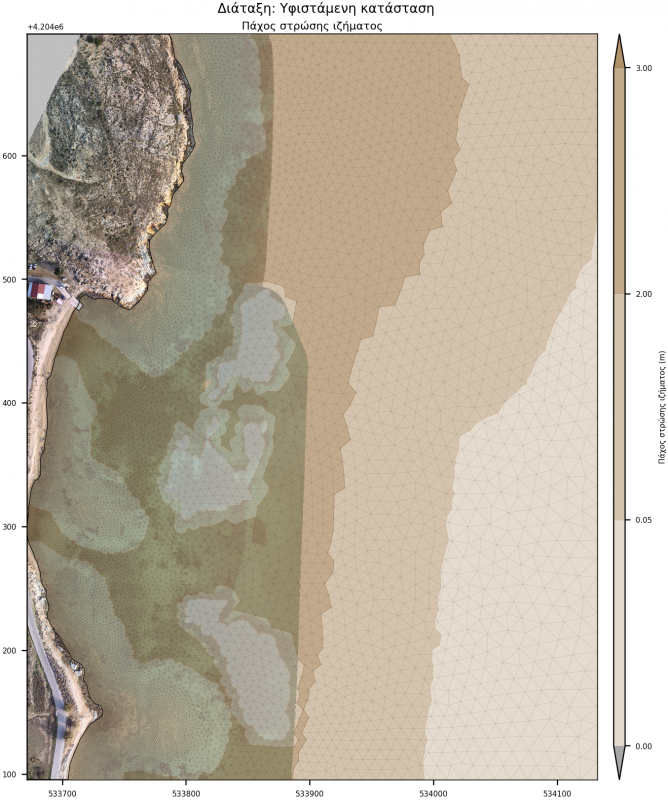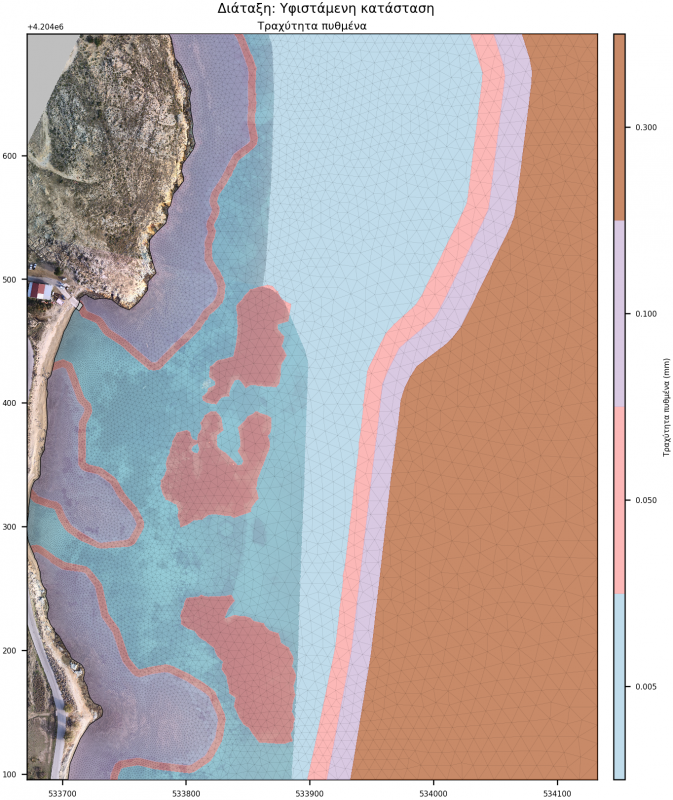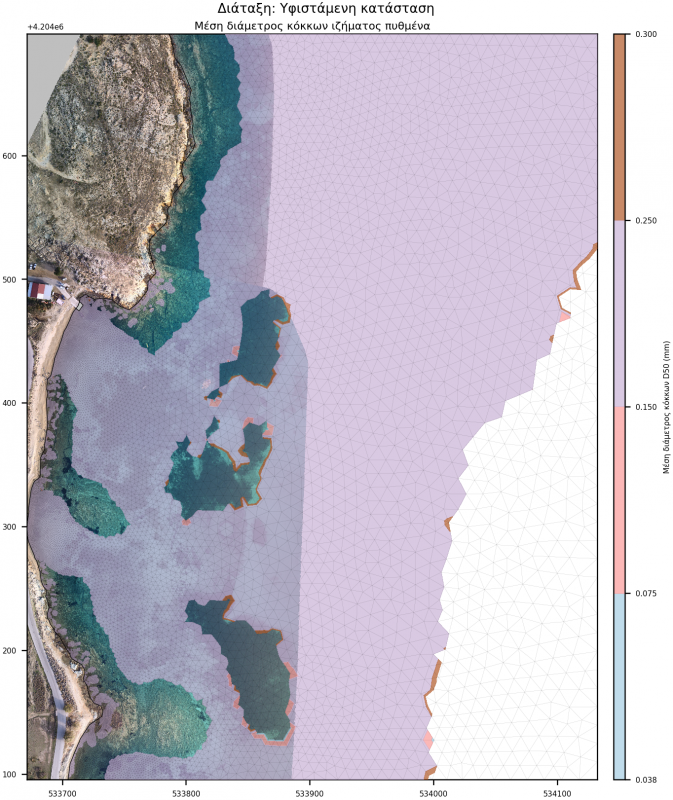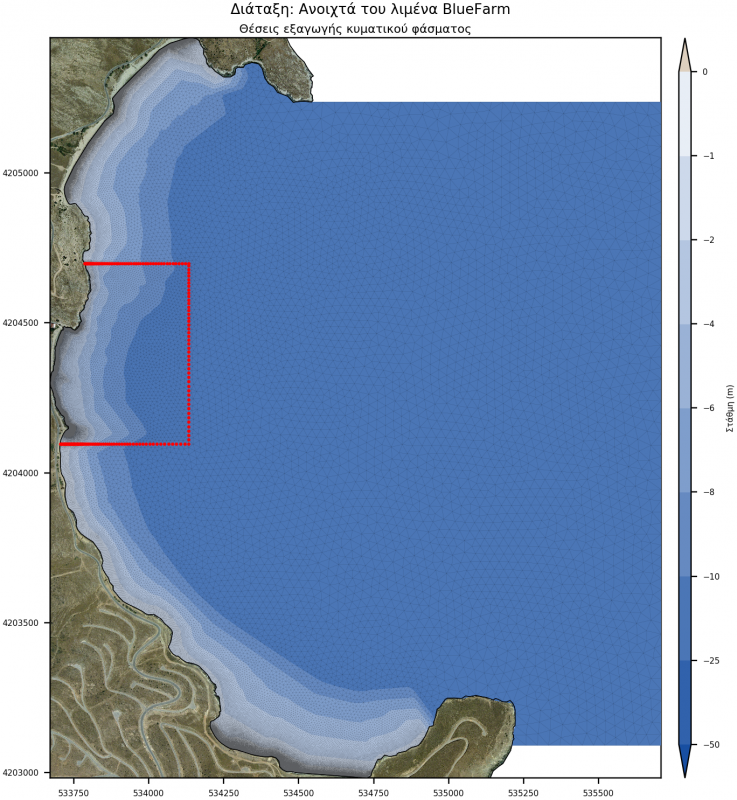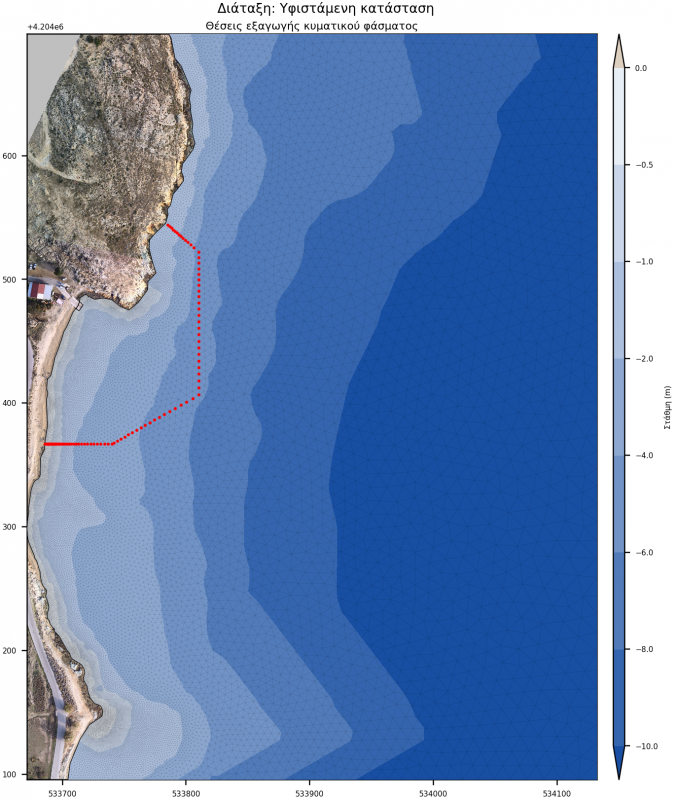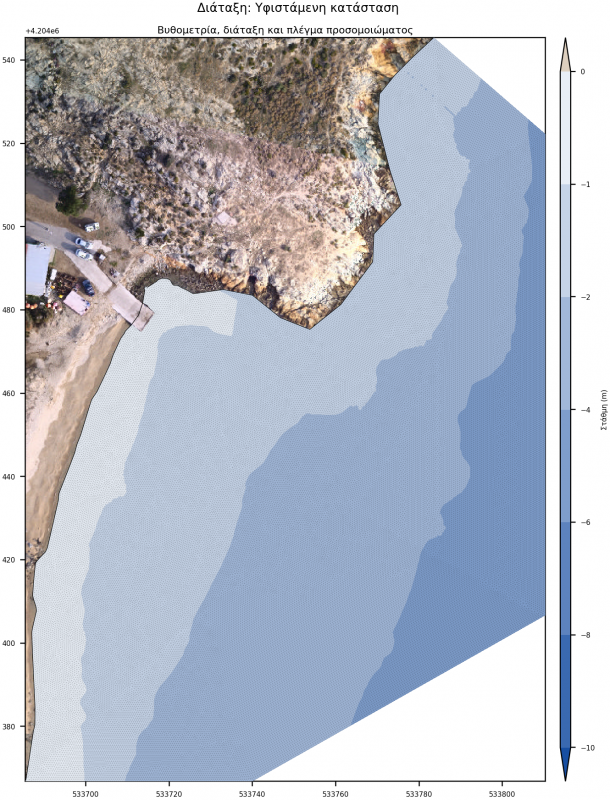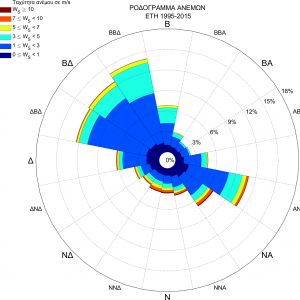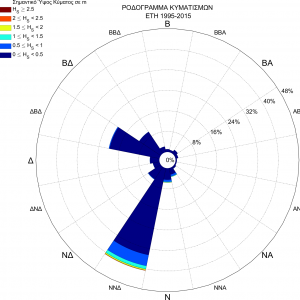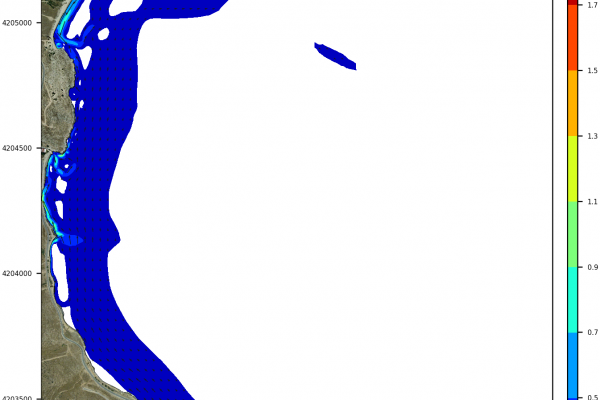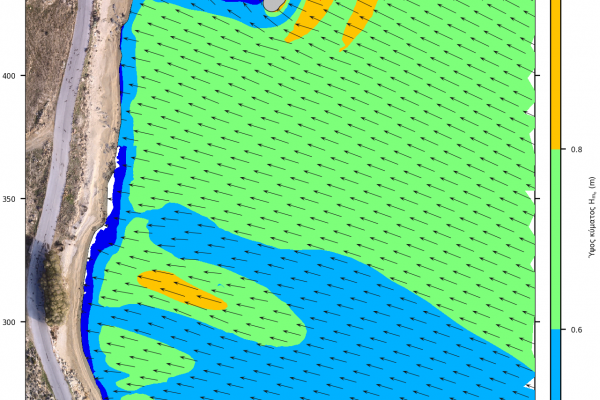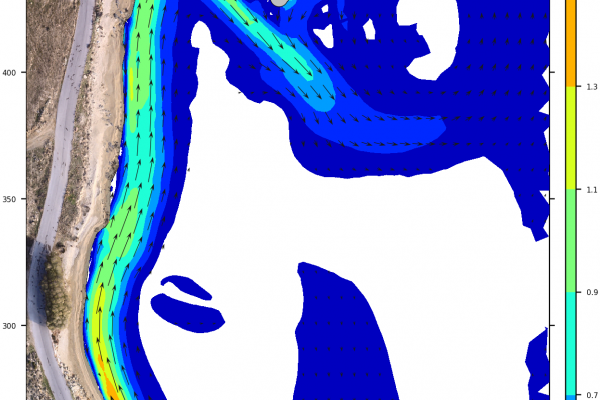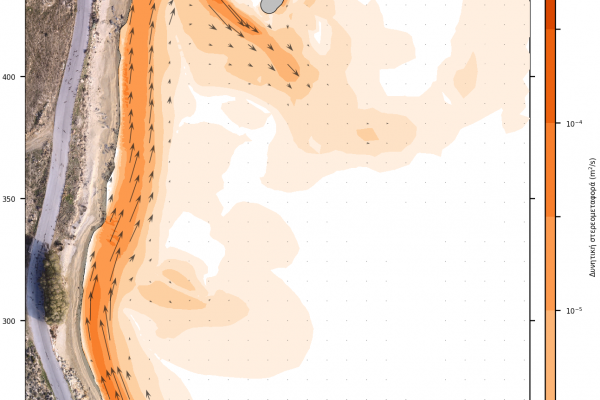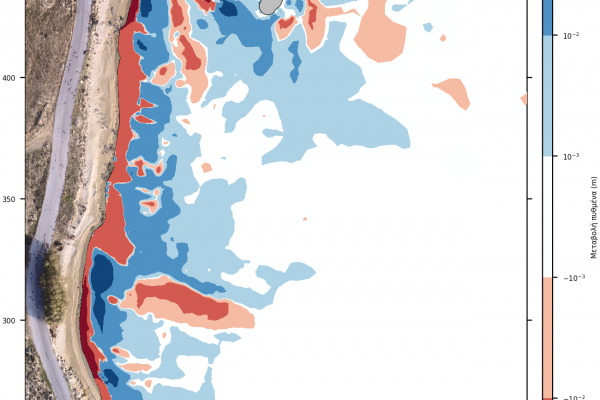Small port facilities in Karystos, Evia island
Commissioning
In October 2018, Blue Farm SA commissioned CNWAY to conduct the required studies for the licensing of a limited fishing facility on the west side of Karystos Bay, at the site of an existing pier. One of the aforementioned was the sediment transport study by means of numerical modeling.
Project location
The proposed project site is on the west side of Karystos bay and about 2 kilometers south of the village of Zarboutaika and two nautical miles southwest of the port of Karystos. A small stream flows at the site of the project and from this point to the south a small beach is created as a result.Therefore, the purpose of the coastal study was to protect the harbor from sintering and to assess the impact on the coastline. The application of a mathematical model of sediment transport and morphodynamic evolution of the coastal zone is an integral part of it.
Numerical modeling
Offshore sediment transport was performed with the TMS (Telemac-Mascaret System) computing suite based on the coupling of individual models of wave propagation (TOMAWAC and ARTEMIS), wave-induced currents (TELEMAC2D) and sediment transport (SISYPHE). Model parameterization requires the input of sediment grading, spatial distribution and availability, as well as the spatial distribution of the corresponding friction coefficients based on the seabed texture. The spatial distribution map was created by combination of remote-sensing techniques and an appropriate on-site survey and sampling program. Specifically, the following supportive activities were carried out:
- shoreline investigation
- seabed sediment sampling at varying depths
- bathymetric and topographic survey
- photographic documentation / Aerial mapping
- marine vegetation mapping
- wind-wave climate estimation
Meticulous parameterisation ensures more accurate modeling of physical processes, enhancing the reliability of the analysis results.
Numerical model characteristics
The model consists of 2 sub-models, 'offshore' and 'nearshore'. The 'offshore' extends from the offshore wave position (WAM wave model node) to the shore, and its role is to prescribe wave and current boundary conditions for the 'coastal' model. The 'coastal' model is a subset of 'offshore' and this nesting aims to reduce computational effort.
- Offshore simulation: It extends 2.0 km along the N-axis and 2.0 km laterally. It covers an area of approximately 4 km2 and consists of 177,000 elements and 90,000 nodes
- Coastal simulation: It extends 600 meters along the NE-axis and 430 meters laterally. It occupies an area of approximately 243 acres. and consists of about 55,000 elements and 28,000 nodes
- Wave disturbance simulation: It extends 200 meters along the N-axis and 120 meters laterally. It covers an area of about 14 acres. and consists of about 120,000 elements and 60,000 nodes
Wave climate
The wind and wave climate off the project was taken from the Skiron and WAM models for the period 1995-2015.
Initially, the wave directions were divided into 45 ° sectors and the wave height values were divided into 0.5 meter bins. Very low waves were excluded and very high aggregated due to the very low incidence.
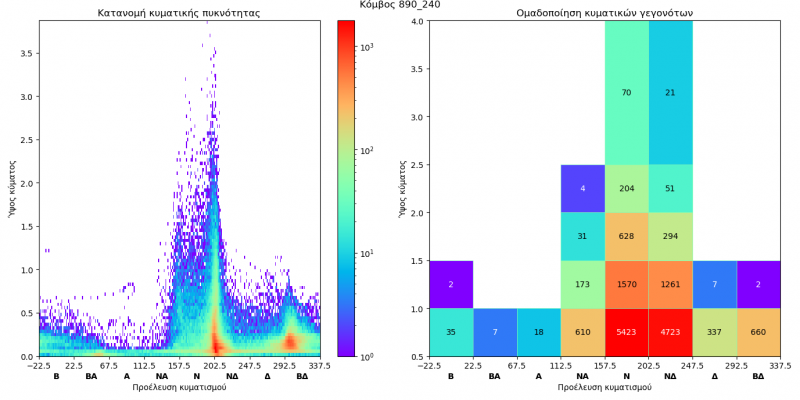
Subsequently, the directional sectors that did not affect the study area were excluded. For the remaining directional sector-wave bin combinations, the equivalent wave height (representative of the wave state on a yearly basis) was calculated.
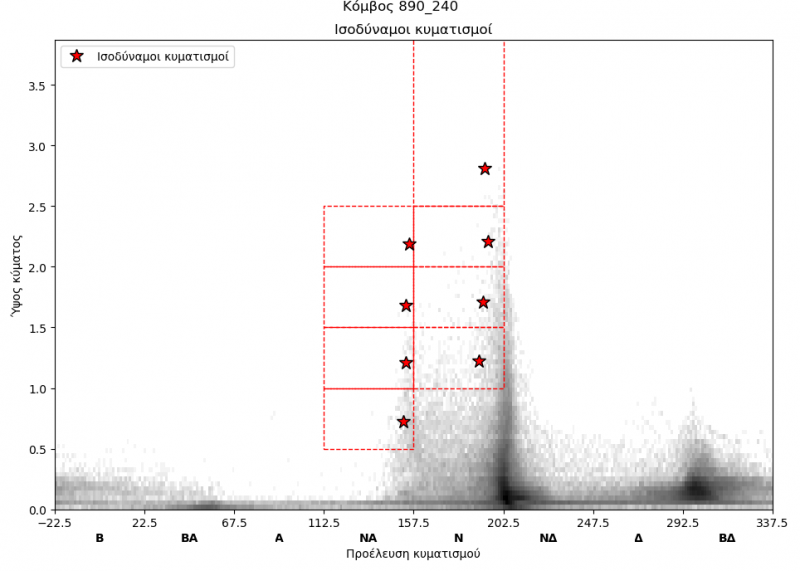
The wave cases were examined sequentially so that changes in bottom morphology were taken into account in the next case. The procedure was repeated 5 times, to simulate the bottom change over 5 years.
Conclusion
The study optimized the layout of the exterior works, estimated the average annual volume of basin sedimentation and found that the proposed works do not adversely affect the existing sediment transport equilibrium.

